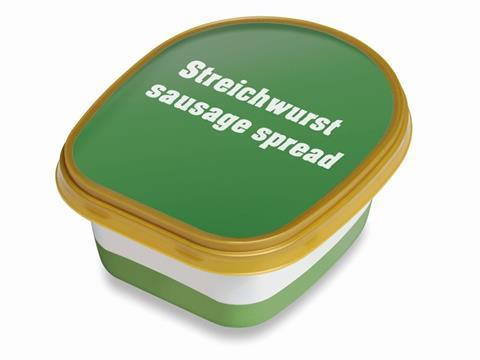
A study by the Fraunhofer Institute for Environmental, Safety and Energy Technology UMSICHT on calculation of the carbon footprint of various packaging solutions for sausages points to a reduction in greenhouse gas emissions with clip closure solutions, as Germany-based company Poly-clip System reports.
According to the study, when directly compared with injection-molded cups and thermoformed packaging, clip closures result in a substantially greater reduction in emissions. In the case of cold cuts, clip closure solutions produce up to 64% less greenhouse gas emissions than injection-molded cups, and up to 81% less greenhouse gas emissions than thermoformed packaging.
“We expected our packaging solutions to offer environmental benefits. As a result of this study we can now for the first time quantify these benefits for our customers,” says Mr Kristian Blomqvist, Vice President Sales and Marketing at Poly-clip System.
Against the backdrop of the new German Packaging Act, the debate around ocean waste and microplastics and the circular economy, environmentally friendly packaging is increasingly in demand. The results show that CO2 emissions can be reduced by the choice of packaging. Using eco-balancing, the carbon footprint of a product is determined over its life cycle and a statement on its global warming potential is possible. In order to establish how environmentally friendly their packaging solutions are, Poly-clip System commissioned the Fraunhofer Institute UMSICHT to investigate a variety of packs for meat products, comparing clip closure solutions with tray- and thermoformed packaging as well as injection-molded cups for specific meat products one with another.
Method
For determination of the carbon footprint, the ecological evaluation covered everything from extraction of the raw materials (for example petroleum) up to the finished packaging solution, including disposal of the packaging. The packaging solutions were compared using a comparison unit, which for sausage spread packs consisted of a 150 g pack of sausage spread, and for cold cut packs a 150 g pack of cold cuts. The bases of calculation included the weight and materials of the packaging solutions and the manufacturing procedure involved. Analysis of the materials was performed by means of infrared spectroscopy and the packaging plastics manufacturing processes were simulated using commercial eco-balancing databases.

Results “For cold cuts, around 0.05 kg CO2 equivalent can be cut using the clip closure solution, compared with thermoformed packaging. When extrapolated to the consumption of cold cuts in Germany, this represents a reduction of 4,090 tons of CO2 equivalent per annum, corresponding to around 30,000 driven car kilometres,” says Nils Thonemann from the Department of Sustainability and Resource Management at the Fraunhofer Institute UMSICHT. “In the case of sausage spread packaging, using the clip closure solution saves up to 0.04 kg CO2 equivalent per comparison unit, or 3,270 tons of CO2 equivalent in terms of the total annual German consumption of sausage spread.”
















